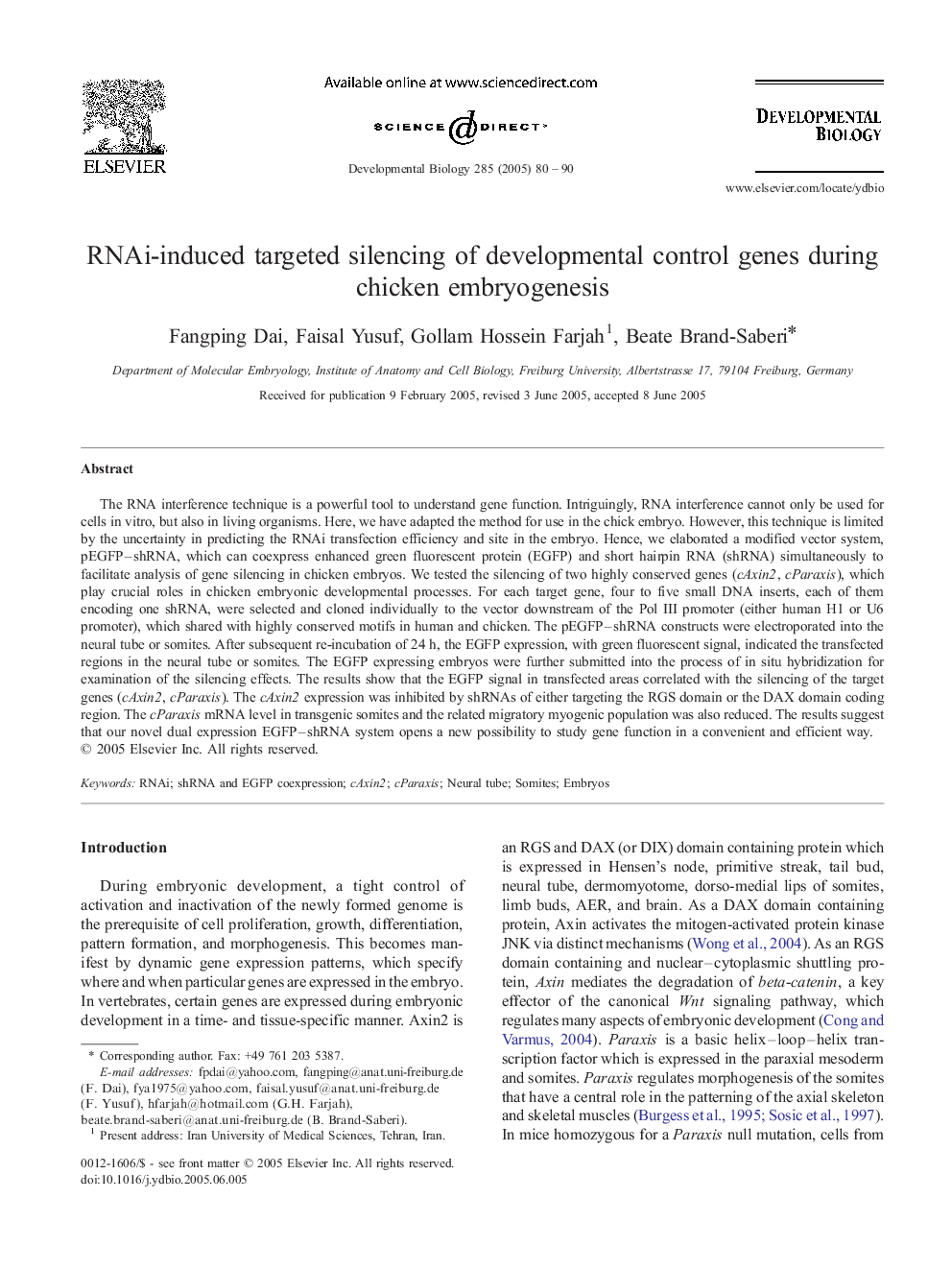| Article ID | Journal | Published Year | Pages | File Type |
|---|---|---|---|---|
| 10933937 | Developmental Biology | 2005 | 11 Pages |
Abstract
The RNA interference technique is a powerful tool to understand gene function. Intriguingly, RNA interference cannot only be used for cells in vitro, but also in living organisms. Here, we have adapted the method for use in the chick embryo. However, this technique is limited by the uncertainty in predicting the RNAi transfection efficiency and site in the embryo. Hence, we elaborated a modified vector system, pEGFP-shRNA, which can coexpress enhanced green fluorescent protein (EGFP) and short hairpin RNA (shRNA) simultaneously to facilitate analysis of gene silencing in chicken embryos. We tested the silencing of two highly conserved genes (cAxin2, cParaxis), which play crucial roles in chicken embryonic developmental processes. For each target gene, four to five small DNA inserts, each of them encoding one shRNA, were selected and cloned individually to the vector downstream of the Pol III promoter (either human H1 or U6 promoter), which shared with highly conserved motifs in human and chicken. The pEGFP-shRNA constructs were electroporated into the neural tube or somites. After subsequent re-incubation of 24 h, the EGFP expression, with green fluorescent signal, indicated the transfected regions in the neural tube or somites. The EGFP expressing embryos were further submitted into the process of in situ hybridization for examination of the silencing effects. The results show that the EGFP signal in transfected areas correlated with the silencing of the target genes (cAxin2, cParaxis). The cAxin2 expression was inhibited by shRNAs of either targeting the RGS domain or the DAX domain coding region. The cParaxis mRNA level in transgenic somites and the related migratory myogenic population was also reduced. The results suggest that our novel dual expression EGFP-shRNA system opens a new possibility to study gene function in a convenient and efficient way.
Keywords
Related Topics
Life Sciences
Biochemistry, Genetics and Molecular Biology
Cell Biology
Authors
Fangping Dai, Faisal Yusuf, Gollam Hossein Farjah, Beate Brand-Saberi,
